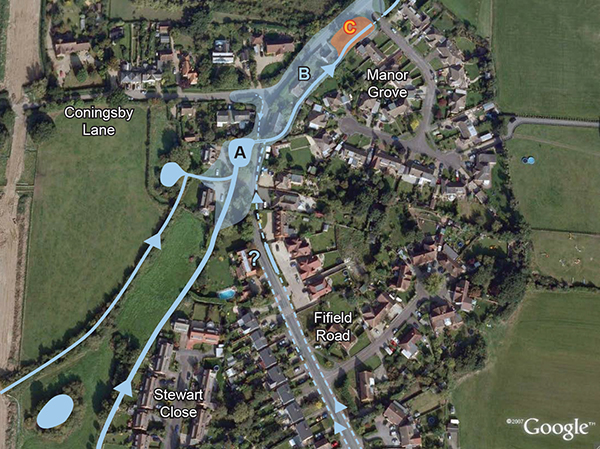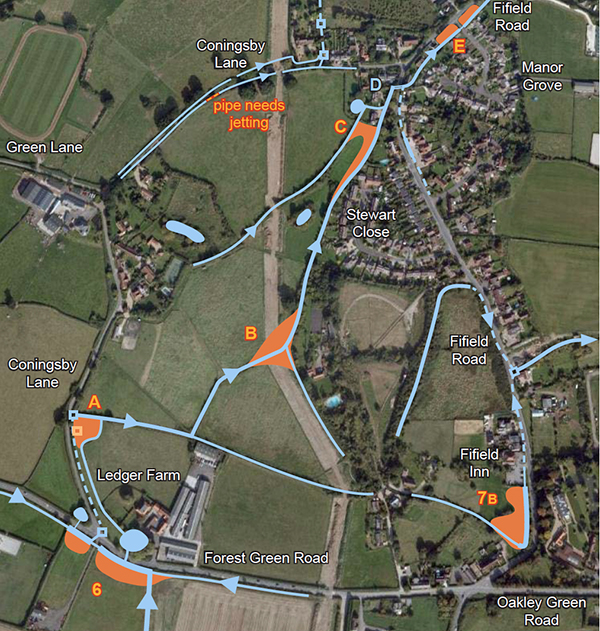
9 Wet Spots 2020
Where are we after 11 years ?
Where are we after 11 years ?

| ||||
| Photos | Click pic for larger image to save or print | |||
| 8 | Culvert under road at Willow Creek - Fifield Road (south) | |||
|
Several drainage routes converge at a double culvert under the Fifield Road turning what is normally a stream through the front garden of Willow Creek into a large pond (A) in times of heavy rainfall. 70 years ago or more this really was a full time pond and there was a small road bridge allowing a substantial northward outflow (B). At times of heavy rainfall this pinch point causes major flooding and as yet we have managed to achieve absolutely nothing that might improve the situation. In fact it is very difficult to see how the onward flow from this point could be expanded to reduce the back-up. The route from what used to be the pond under the road via the culvert that was once a road bridge and then the constrained channel behind the old chapel and the Old Cottage to the culvert under Manor Grove and onwards cannot realistically be usefully expanded. Parish land at (C) gets flooded by backup from the Manor Grove culvert and might usefully be excavated as a holding pond to delay the point at which the property at (B) and the road become flooded. Similar space north of the Manor Grove culvert might be used in this way also to relieve pressure on “Wet Spot” 2 a little further north. The most obvious improvement to the onward flow of water for the whole area would be the installation of a major storm drain under the entire length of Fifield Road and on under the A308. But given the constraints of local government budgets this is clearly a fantasy. When the rain stops and levels begin to drop excess water now clears pretty speedily, much more quickly than it ever used to though it is not clear why that is. Probably the most practical approach is to investigate the possibility of delaying the arrival of all this water coming from the Ledger Farm area of “Wet Spot” 6 to spread the flow over a longer period of time at a slower pace. 
Introducing some excavated areas of perhaps 20 to 30 cm at A, B, and C would act as wet season sumps to delay and reduce the flow arriving at the double culvert (D). A similar approach either side of the entrance to Manor Grove (E) would help relieve the pressure on The Old Cottage, “Wet Spot” 2, and Fifield Road towards Longlea Nursing Home. Perhaps it would make sense to arrange for all of these, along with the similar requirements south of The Fifield Inn (7B) and the Cricket Club to the east at “wet Spot” 1, to be carried out in the same time period as part of one project. This of course will require discussions with various landowners and we can hardly expect them to be keen on the idea of donating land to become wet season sumps ! | ||||